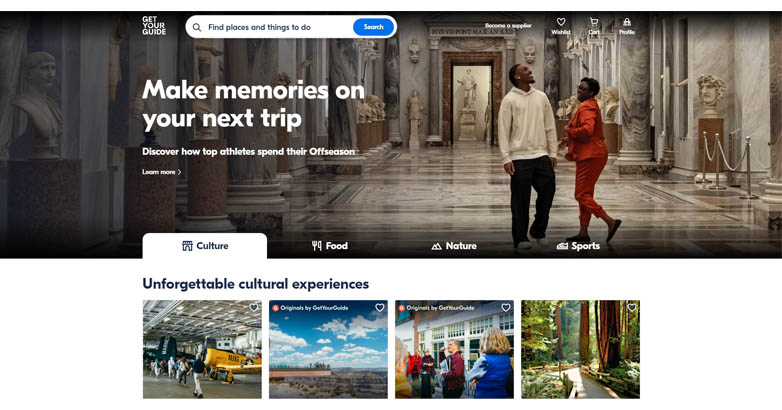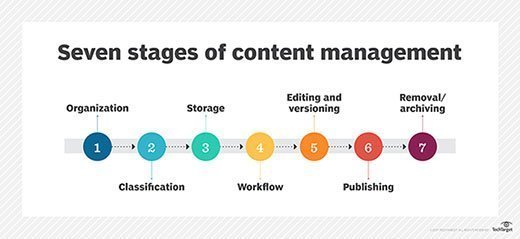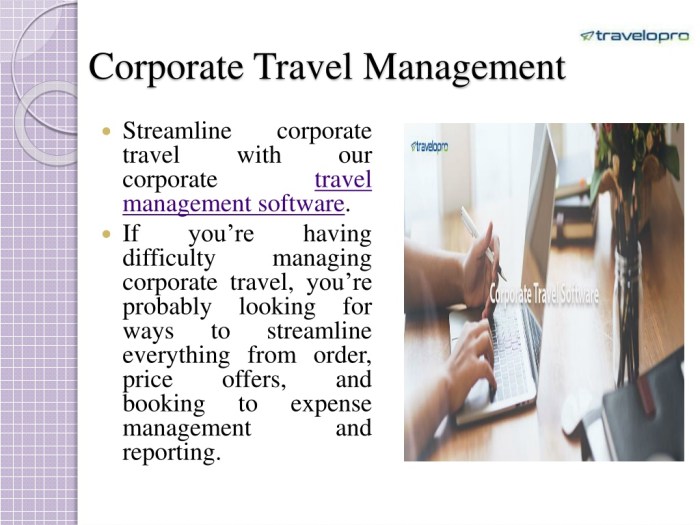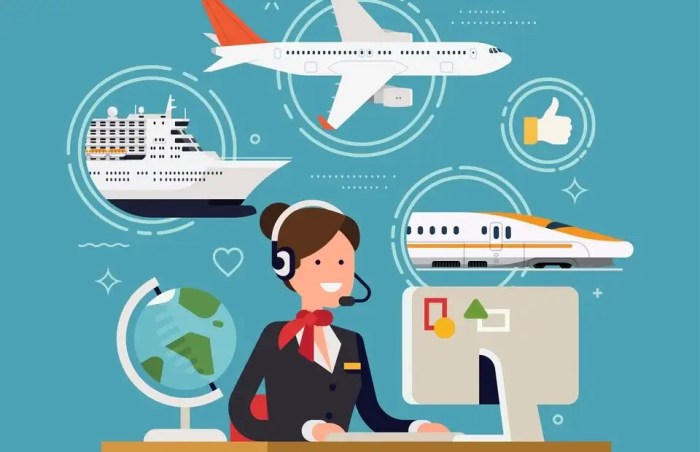Corporate Travel Website A Comprehensive Guide
Corporate travel website: Streamlining business travel for employees and managers, this comprehensive guide details the design, content strategy, and integration aspects of a modern corporate travel platform. It covers everything from user-friendly booking interfaces to robust reporting tools, ensuring a seamless and efficient travel experience.
The guide explores key features like responsive design, secure payment gateways, and detailed trip history management. It also delves into crucial content elements, including travel policies, destination information, and user-specific resources. Finally, it addresses integration with existing company systems, content management, data security, and customer support, providing a complete picture of building a successful corporate travel website.
Website Design and Functionality
A modern corporate travel website must be more than just a booking tool; it’s a crucial platform for streamlining travel processes and enhancing employee experience. Effective design and intuitive functionality are key to maximizing its value for both travel managers and individual employees. This section explores essential features, design principles, and booking methods vital for a successful corporate travel website.
Essential Features for a Modern Corporate Travel Website

A robust corporate travel website requires a suite of features beyond basic booking capabilities. These features facilitate seamless trip management, reduce administrative overhead, and enhance the overall employee travel experience. A comprehensive set of features fosters a more efficient and satisfying travel process for both the company and its employees.
- Responsive Design: A responsive design ensures optimal viewing and usability across various devices, from desktop computers to mobile phones and tablets. This adaptability is critical for employees booking trips on the go, minimizing frustration and maximizing efficiency.
- Secure Payment Gateways: Implementing secure payment gateways is paramount to protect sensitive financial information. This fosters trust and confidence among users, allowing for smooth and secure transactions. Employing industry-standard encryption protocols is essential.
- Trip History Management: A dedicated trip history management feature allows users to easily access and manage their past bookings. This feature simplifies record-keeping and provides a centralized repository for trip information, enabling quick retrieval and reference for future travel needs.
- Real-time Trip Updates: Real-time updates regarding flight status, hotel bookings, and other trip details are critical for keeping users informed. This proactive communication minimizes unexpected issues and keeps users informed about potential delays or changes to their travel plans.
- Expense Reporting Integration: Integrating with expense reporting systems streamlines the process of submitting and approving travel expenses. This eliminates manual data entry and ensures accurate record-keeping.
User-Friendly Interface for Booking and Managing Trips
Designing a user-friendly interface is crucial for ease of use and minimizing frustration. A well-organized and intuitive layout, combined with clear and concise information, contributes to a positive user experience.
A clear visual hierarchy and intuitive navigation ensure that users can quickly find the information they need. Visual cues, such as color coding and clear labeling, enhance the interface’s usability. Visual design principles, including accessibility guidelines, should be followed to ensure a positive experience for all users, regardless of their abilities.
Booking Methods Supported
The website must support various booking methods to accommodate different needs and preferences. This includes individual bookings for personal travel and group bookings for conferences or events. Offering both types of booking capabilities ensures flexibility and caters to a wide range of corporate travel scenarios.
- Individual Bookings: The system should allow employees to book their trips independently. This flexibility empowers employees and streamlines the process while minimizing administrative overhead for the company.
- Group Bookings: The platform should enable seamless group bookings for conferences, events, or other corporate gatherings. This includes features for managing multiple travelers, room blocks, and other group-specific needs.
- Travel Policy Management: A travel policy management feature allows the company to establish and enforce its travel policies on the platform, ensuring that all bookings comply with corporate guidelines. This promotes consistency and control over travel expenditures.
Navigation Structures for Corporate Travel Websites
A well-structured navigation system is essential for easy access to various functionalities. Clear categorization and intuitive labeling ensure that users can find the information they need efficiently.
A logical and consistent structure, such as using tabs or menus, aids in the overall user experience. Employing visual cues, such as breadcrumbs, can further enhance the navigation experience, making it easy for users to track their location within the website. Examples of effective navigation structures include a prominent menu bar, a dedicated booking section, and separate pages for policies, reporting, and trip history.
Search Functionality for Destinations, Flights, and Hotels
A robust search functionality is critical for finding suitable destinations, flights, and hotels. Effective searching allows users to quickly and efficiently find the best options based on their specific needs and criteria.
A flexible search engine with various filtering options ensures that users can find the best matches for their trip requirements. The search results should be presented clearly and concisely, with relevant details and options to further refine the results.
| Feature | Benefit |
|---|---|
| Responsive design | Accessible on any device |
| Secure payment gateways | Safe transactions |
| Trip history management | Easy access to past bookings |
Content Strategy and Information Architecture

Source: paxes.com
A well-structured corporate travel website is crucial for streamlining the travel process and enhancing employee experience. This section articulates the key content elements and information architecture to create a user-friendly and efficient platform. An effective organization ensures that employees and managers can easily access the necessary information and tools.
This detailed approach will cover essential information, diverse user needs, captivating content, various formats, clear policy presentation, engaging visuals, and organized categorization of destinations and services. The focus is on creating a platform that is intuitive and readily accessible to all users.
Essential Information for a Corporate Travel Website
A comprehensive corporate travel website should provide employees and travel managers with readily accessible and relevant information. This includes clear guidelines, booking procedures, and support resources.
- Trip policy details (e.g., expense reimbursement, travel allowances, and required documentation). These policies should be clearly articulated and easily navigable.
- Booking process (e.g., online booking tools, preferred vendors, and confirmation procedures). A user-friendly interface is crucial for a smooth booking experience.
- Destination information (e.g., local regulations, visa requirements, and safety guidelines). Comprehensive information ensures employees are well-prepared for their trips.
- Travel advisories and alerts (e.g., updates on security concerns or local events). This allows employees to stay informed and make informed decisions.
- Contact information for travel support (e.g., dedicated support teams and relevant email addresses). Easy access to support is essential for addressing any issues promptly.
User Group Information Needs
The website must cater to the distinct needs of employees and travel managers.
| User Group | Information Needs |
|---|---|
| Employees | Trip policy details, booking process, destination information, travel advisories, and contact information for support. |
| Travel Managers | Reporting tools, expense management, policy administration, and real-time tracking of employee travel. |
Compelling Destination Content
Showcase destinations with engaging visuals and descriptions that entice employees.
- Highlighting key attractions, cultural experiences, and local amenities. Detailed information can make the destination more appealing.
- Including high-quality images and videos to provide a visual representation of the destination. Visual elements can create a stronger connection with the place.
- Providing reviews and recommendations from previous travelers. Authentic testimonials can boost confidence in the destination’s appeal.
Content Formats
Employ various content formats to cater to different learning styles and preferences.
- Blog posts: Share insights on destinations, travel tips, and industry news. Blog posts offer a platform for engaging content.
- Articles: Present in-depth information about destinations, cultural insights, or travel trends. Articles offer more detailed coverage of topics.
- Infographics: Visually represent complex data like travel costs, visa requirements, or local regulations. Infographics can make complex information easier to grasp.
Effective Travel Policy Presentation
Present travel policies clearly and concisely.
- Use a user-friendly layout with clear headings and subheadings. A well-organized layout makes policies easier to navigate.
- Include examples and case studies to illustrate policies in practice. Practical examples clarify policies.
- Use bullet points and numbered lists to highlight key points. This formatting emphasizes important information.
Visual Elements for Enhanced User Experience
Integrate high-quality visuals to enhance the user experience.
- Use high-resolution images and videos of destinations, accommodations, and amenities. Visuals make the website more engaging.
- Employ interactive maps to display travel routes and show location details. Interactive maps enhance user experience and provide more useful information.
- Incorporate visually appealing design elements to improve website aesthetics. Design enhances user experience.
Categorization of Destinations and Services
Logically organize destinations and services.
- Categorize destinations based on region, interests, or type of trip (e.g., business, leisure). Logical categorization makes the platform more intuitive.
- Create clear categories for travel services (e.g., accommodation, transportation, and activities). Clear categorization improves searchability and user experience.
- Include search functionality to allow users to easily find specific destinations or services. Search functionality enhances usability.
Integration and Management

A well-integrated corporate travel website is crucial for seamless operations and a positive user experience. Proper management of the platform ensures accuracy, consistency, and efficiency in travel bookings and expense reports. This section details the key aspects of integration, content management, security, and support for a robust and user-friendly travel solution.
Integration with Existing Systems
The corporate travel website should integrate with existing company systems to streamline processes and reduce manual data entry. This integration minimizes errors, improves data accuracy, and fosters a cohesive travel management experience. A key example of integration is linking the booking system with the company’s calendar system to ensure availability and avoid scheduling conflicts.
| System | Integration Point | Benefit |
|---|---|---|
| Expense Reporting Software | Automatic transfer of travel expenses data | Reduces manual data entry and potential errors. Enables real-time expense tracking. |
| Company Calendar | Synchronization of booking availability | Ensures accurate booking scheduling and avoids conflicts with employee availability. |
| HR System | Automated employee data retrieval | Pre-populates booking forms with employee information, reducing manual data entry. |
| Payment Gateway | Secure online payment processing | Provides secure payment options and simplifies the booking process. |
Content Management Strategy

A robust content management system (CMS) is essential for efficient content updates and modifications. This allows for centralized updates, reducing the risk of inconsistencies and errors across different platforms. Version control and audit trails are crucial for tracking changes and maintaining a history of updates.
- Centralized Content Repository: A central repository for all travel-related content ensures consistency and simplifies updates.
- Workflow Management: Establishing a clear workflow for content approval and publication prevents errors and ensures accuracy.
- Content Calendar: A content calendar articulates the planned updates, promoting organization and consistency.
- User Roles and Permissions: Define user roles and permissions to restrict access to sensitive information and content updates, maintaining data security and control.
Data Security
Protecting sensitive travel data is paramount. Strong encryption protocols should be implemented for all data transmission and storage. Regular security audits and vulnerability assessments are critical to identify and address potential threats. Compliance with relevant data privacy regulations is essential.
Data security is not just a technical issue, but a critical component of trust and operational efficiency.
Customer Support and Feedback
Excellent customer support and feedback mechanisms are vital for a successful travel website. Implementing a help center, FAQs, and responsive customer service channels is essential. Collecting and analyzing customer feedback allows for continuous improvement of the website and the overall travel experience.
- Help Center: A comprehensive help center with FAQs, troubleshooting guides, and user manuals addresses common issues and provides self-service options.
- Customer Support Channels: Provide multiple support channels (e.g., email, phone, live chat) to address customer inquiries promptly and effectively.
- Feedback Mechanisms: Implement feedback forms, surveys, and online reviews to gather valuable insights and identify areas for improvement.
Potential Integrations
The corporate travel website should integrate with various company systems to enhance functionality and efficiency. Examples include expense reporting software, calendar systems, and HR databases.
- Expense Reporting Software: Integration with expense reporting software allows for automatic transfer of travel expenses, streamlining the reimbursement process and reducing manual effort.
- Calendar Systems: Integration with company calendars ensures booking availability and avoids conflicts with employee schedules.
- HR Databases: Integration with HR databases pre-populates employee information, reducing data entry time and improving accuracy.
- Payment Gateways: Integration with secure payment gateways ensures secure online transactions and efficient payment processing.
Website Performance and User Engagement
Tracking website performance and user engagement is essential for optimizing the user experience. Key metrics include website traffic, booking conversion rates, and average booking time. Analyzing these metrics provides insights into user behavior and areas for improvement. Tools like Google Analytics can be utilized to track these metrics.
- Website Traffic Analysis: Tracking website traffic provides insights into user activity and popular pages, aiding in content optimization and site navigation improvements.
- Conversion Rate Tracking: Monitoring conversion rates identifies areas where the booking process can be improved to enhance user experience.
- Average Booking Time Analysis: Analyzing average booking time highlights bottlenecks in the process, allowing for targeted improvements to reduce booking times.
Help Section Structure
A comprehensive help section is critical for user support. It should be well-organized, with clear and concise information. Categories should include booking procedures, expense reporting, troubleshooting common issues, and FAQs.
- Booking Procedures: Detailed instructions on making bookings, including step-by-step guides and examples.
- Expense Reporting: Information on submitting expense reports, including forms, guidelines, and common errors.
- Troubleshooting: Solutions to common website issues, like log-in problems or payment errors.
- Frequently Asked Questions (FAQs): A compilation of frequently asked questions and answers, addressing common concerns.
Closing Notes: Corporate Travel Website
In conclusion, a well-designed corporate travel website is essential for modern businesses. By focusing on user experience, robust functionality, and effective integration with existing systems, companies can optimize their travel management processes. The guide highlights the key elements needed to create a platform that is both user-friendly and efficient, ultimately saving time and resources for the organization.





